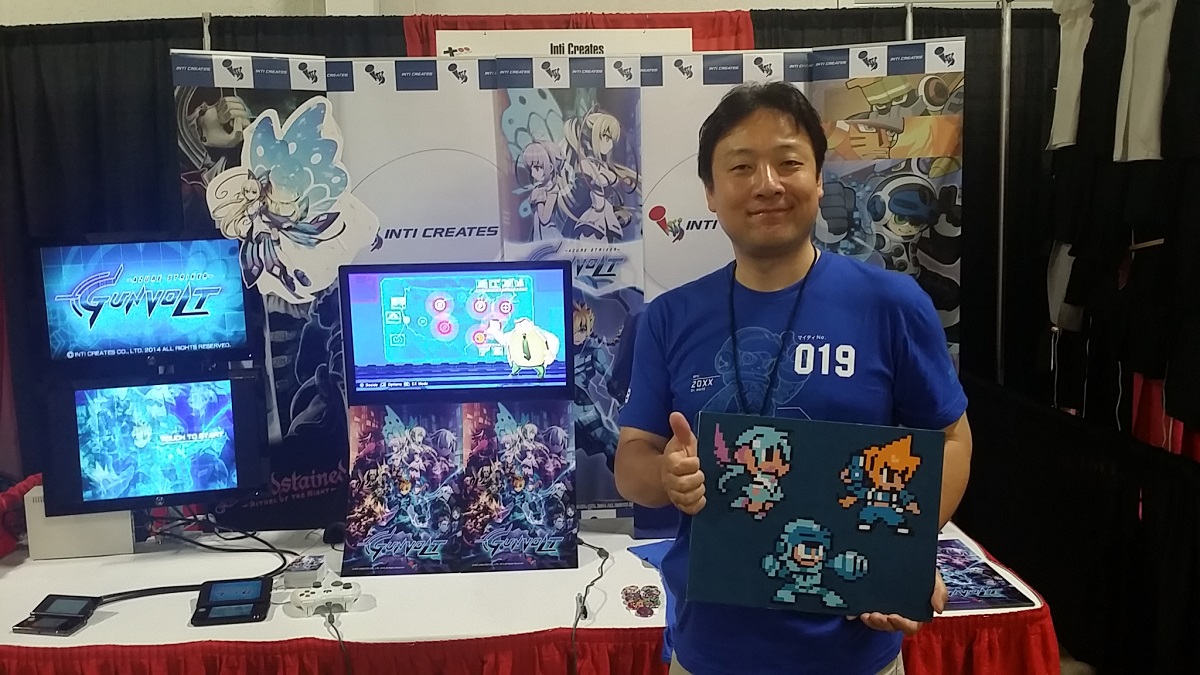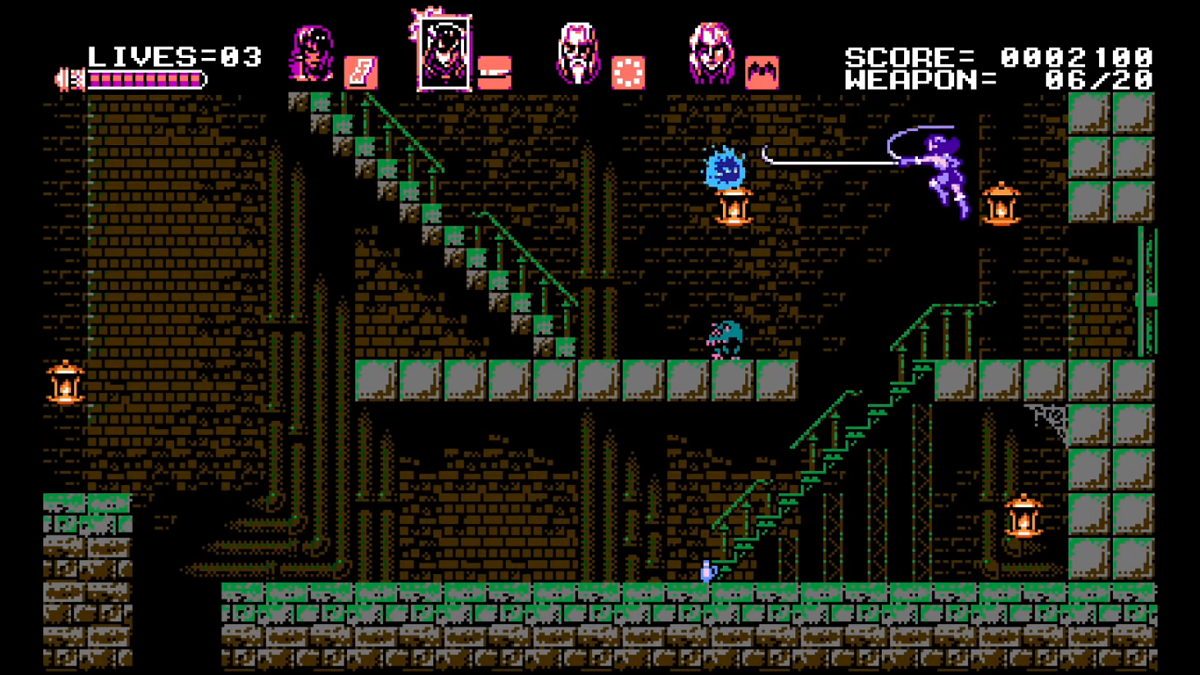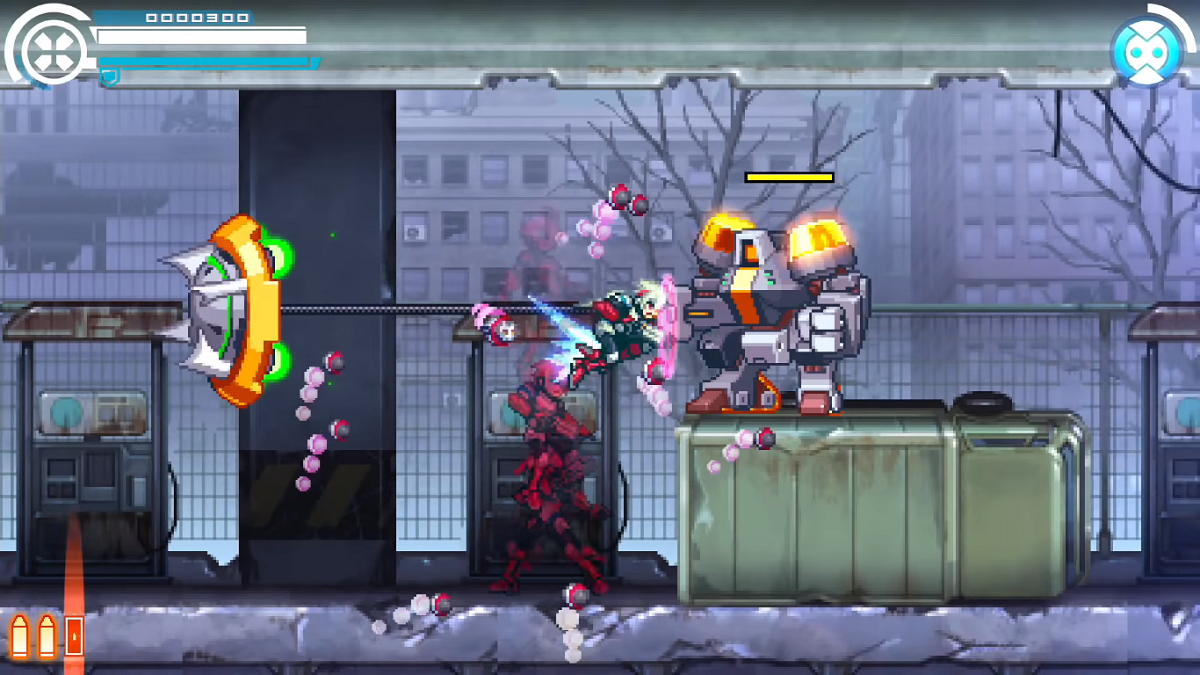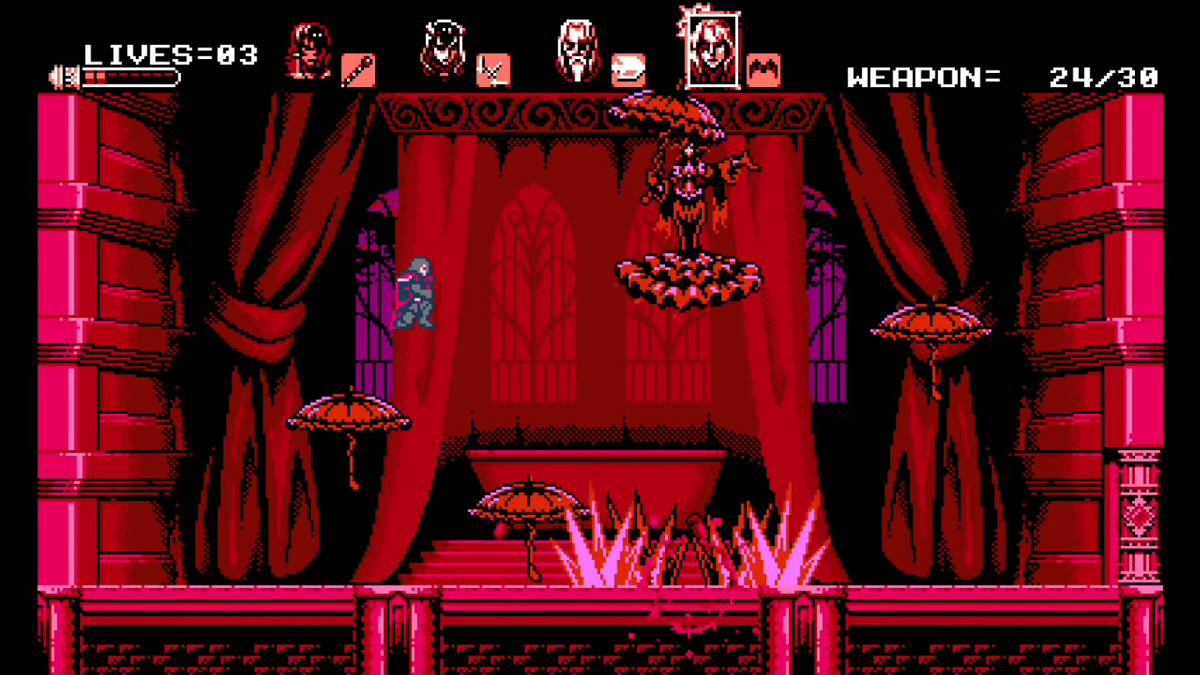Making Old Games in Modern Times: Interview with Takuya Aizu

Inti Creates, the Japanese studio behind Azure Striker Gunvolt, Blaster Master 0 and a multitude of other works, have been very prolific of late. With Gal*Gun 2 only being released a few weeks ago and Dragon: Marked for Death set to be released this year, the indie developer decided that two games wasn’t quite enough. So at BitSummit vol. 6, they doubled it – announcing Gunvolt Chronicles: Luminous Avenger iX and Bloodstained: Curse of the Moon, both slated for 2018.
Gunvolt Chronicles: Luminous Avenger iX acts as a side-story to the core Gunvolt games and will task players with controlling the series’ resident anti-hero, Copen. Meanwhile, Bloodstained: Curse of the Moon was revealed to be the retro-style accompaniment to Bloodstained that was promised as a stretch goal in the Kickstarter campaign. Curse of the Moon harkens back to the look, feel and design elements of NES Castlevania games – so fans of that particular era have much to look forward to. And with it being scheduled for release on the 24th of May, they won’t have to wait long.
During BitSummit vol. 6, I had the chance to speak with Inti Creates’ CEO, Takuya Aizu to talk about both upcoming projects and the success Inti Creates have had in the turbulent Japanese indie game development scene.

The Indie Game Website: Let’s start off by talking about Gunvolt Chronicles: Luminous Avenger iX. Will there be any significant gameplay changes from the way Copen played in Azure Striker Gunvolt 2?
Takuya Aizu: While it’s still early in the development process and you’ll be familiar with iX’s basic moveset, what we really want to do going forward with Ix is have new abilities, new styles and new types of gameplay. iX very much stands out on its own and won’t just be a carbon copy of Gunvolt 2; we have plenty of new stuff that we want Copen to show off going forward.
You mentioned during the panel that iX will be a side-story to the core Azure Striker Gunvolt series. What kind of playtime length can we expect?
It’ll be what you would tend to expect from our games – there’ll be an opening stage, various bosses and characters you can pick from to fight against as you proceed through final stages to eventually get to the last boss – this sort of formula probably won’t change too much. At this point in time, I would say it would be comparable to something like Gunvolt 1.
I noticed that Bloodstained: Curse of the Moon will be releasing on a variety of different consoles, while Gunvolt Chronicles: Luminous Avenger iX will only be releasing on the Nintendo Switch. Why was the decision made to make iX a Switch exclusive?

Inti Creates have made a lot of retro homage games: whether Mega Man 9 or 10, Mighty Gunvolt, Mighty Gunvolt Burst, Blaster Master Zero and now Bloodstained: Curse of the Moon. What is the design process like for these games? Do you heavily research the design principles and graphical qualities of the games you are paying tribute to?
I think it’s not so much researching specific games – especially when we work with very famous creators like Inafune-san on Mega Man and now Igarashi-san with Curse of the Moon – we base our design philosophy on: what kind of games would fans of their games want to play? What do we think they will enjoy? And then we take those ideas and design our game, our gameplay elements and our characters around what we hope and think people who are fans of their creations will enjoy.
The one exception to this is Blaster Master Zero, for which we obtained the license for the original title so that we can go back to that classic title and really mesh the two together a lot more than we normally would with other games.
Do you ever intentionally modernise certain design elements if you don’t think they have aged well in the original game? For instance, in Bloodstained: Curse of the Moon, having multiple playable characters feels very reminiscent of Castlevania 3: Dracula’s Curse. However, in Curse of the Moon the player is able to switch between all four characters whenever they want, while in Castlevania 3 you are only able to switch between Trevor and one other ally.
It’s not so much how do we go about modernising a retro element, but more like what would be the best fit for that game. For example, switching the characters – as we’re building the game, we don’t want to do the same things over and over again, so we want to find out how we can make these features work for that game in particular. Switching the characters whenever you wanted was a very good fit for the game and it made it a lot of fun, so that’s why we made that decision. Like I was saying before – it’s about making it mesh well for people who are fans of these games, not just gameplay elements, but in the character design, the sound, the pixel graphics and everything else.
Will you be able to switch between all four characters from the very start of the game, or will you unlock them as you progress?

Inti Creates is one of the most successful Japanese indie developers. What would you say has been key to your success?
When you compare us to other Japanese companies, there are companies who make more games and who sell more games than us here in Japan. But as a Japanese company I think one of the differences for us was that from the get-go we had our sights set on not just Japan, but releasing our games worldwide, to everybody. We’ve been fortunate to make the money back we’ve been spending on developing these games, which enables us to continue making new ones.
One last question before we wrap up, and I know it’s a little selfish – I love Blaster Master Zero. Do you think a sequel could be in the cards?
I couldn’t give you any concrete stuff here, but we pretty much released Blaster Master Zero as a launch title, and it did very well for us – we were fortunate to have a lot of people play and enjoy the game – we love it here, too! I think it’d be really cool to make a sequel.

